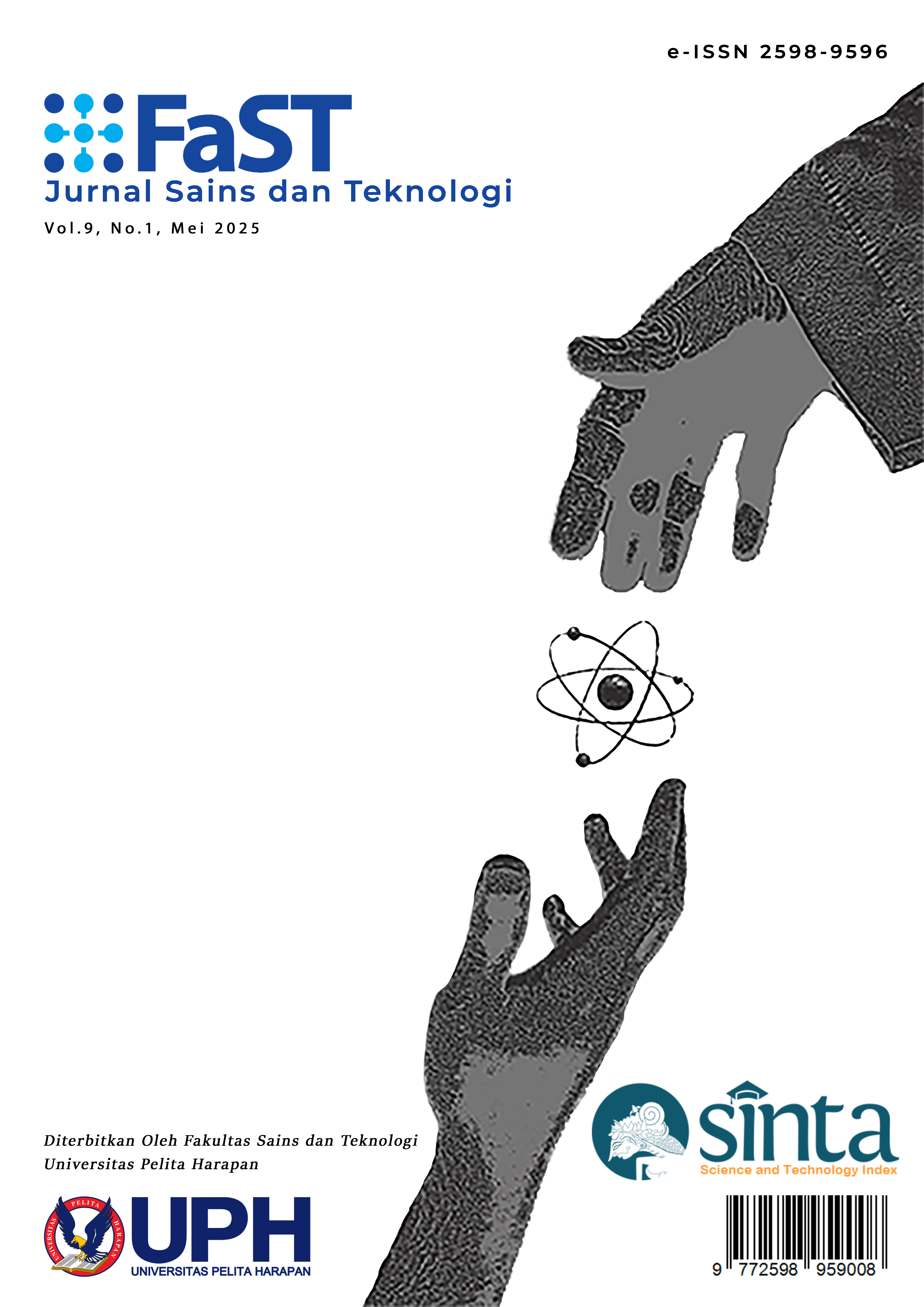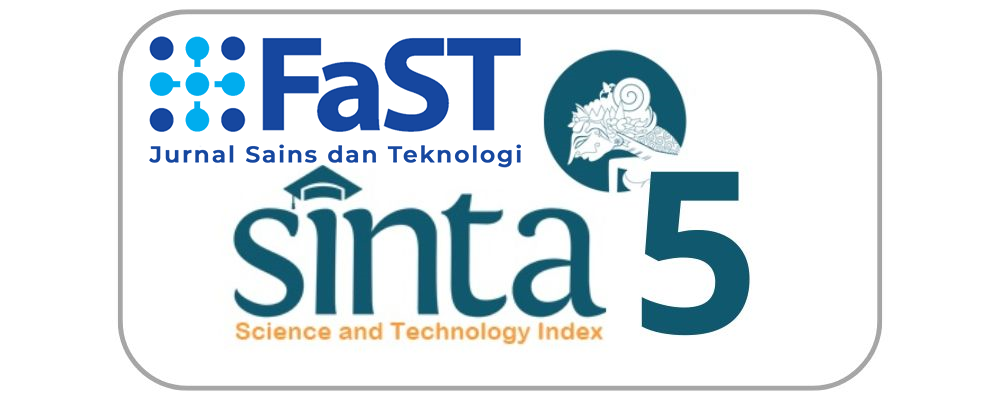Evaluation of Plantaricin Gene Expression in Lactiplantibacillus plantarum Strain SU-KC1a
[Evaluasi Ekspresi Gen Plantarisin pada Lactiplantibacillus plantarum Strain SU-KC1a]
DOI:
https://doi.org/10.19166/jstfast.v9i1.9595Keywords:
antimicrobial, bacteriocin, lactic acid bacteria, probiotic, RT-PCRAbstract
Lactobacillus species are normal gastrointestinal flora and are commonly used in the food industry for fermented milk products. Due to their probiotic properties, Lactobacillus strains are considered safe and effective for human consumption, with antimicrobial activity often attributed to bacteriocins. Lactobacillus plantarum (known as Lactiplantibacillus plantarum) produces plantaricin, a ribosomally synthesized bacteriocin with activity against a range of pathogens and potential as a bio-preservative. In this study, L. plantarum SU-KC1a, isolated from human breast milk, was assessed for its antimicrobial activity through the production of plantaricin. Since plantaricin is typically produced at low concentrations, reverse transcription polymerase chain reaction (RT-PCR) was employed. PCR amplification of the plnJ and plnK genes resulted in amplicons of approximately 168 bp and 173 bp, respectively. These findings suggest that L. plantarum SU-KC1a produces plantaricin JK. However, further sequence analysis is required to confirm the homology of the amplified genes with known plantaricin J and K genes in GenBank.
Bahasa Indonesia Abstract: Spesies Lactobacillus adalah flora gastrointestinal normal dan sering digunakan dalam industri makanan untuk produk susu fermentasi. Karena sifat probiotiknya, strain Lactobacillus dianggap aman dan efektif untuk konsumsi manusia, dengan aktivitas antimikroba yang sering dikaitkan dengan bakteriosin. Lactobacillus plantarum (dikenal sebagai Lactiplantibacillus plantarum) menghasilkan plantarisin, sebuah bakteriosin yang disintesis ribosom dengan aktivitas melawan berbagai patogen dan berpotensi sebagai bio-preservatif. Dalam penelitian ini, L. plantarum SU-KC1a yang diisolasi dari ASI manusia dievaluasi aktivitas antimikrobanya melalui produksi plantarisin. Karena plantarisin biasanya diproduksi dalam konsentrasi rendah, dilakukan reverse transcription polymerase chain reaction (RT-PCR). Amplifikasi PCR dari gen plnJ dan plnK menghasilkan produk amplifikasi sekitar masing-masing 168 bp dan 173 bp. Hasil tersebut mengindikasikan bahwa L. plantarum SU-KC1a menghasilkan plantarisin JK. Namun, analisis urutan lebih lanjut diperlukan untuk mengonfirmasi kesamaan gen yang diamplifikasi dengan gen plantarisin J dan K yang diketahui di GenBank.
References
Chanel, A., Riazi, A., Dubois-Dauphin, R., & Thonart, P. (2015). Screening of plantaricin EF and JK in an Algerian Lactobacillus plantarum isolate. Asian Pacific Journal of Tropical Disease, 5(6), 474–482. https://doi.org/10.1016/S2222-1808(15)60819-2
Djep, D. B., Straume, D., Kjos, M., Torres, C., & Nes, I. F. (2009). An overview of the mosaic bacteriocin pln loci from Lactobacillus plantarum. Peptides, 30(8), 1562–1574. https://doi.org/10.1016/j.peptides.2009.05.014
Fijan, S. (2014). Microorganisms with claimed probiotic properties: An overview of recent literature. International Journal of Environmental Research and Public Health, 11(5), 4745–4767. https://doi.org/10.3390/ijerph110504745
Hata, T., Tanaka, R., & Ohmomo, S. (2010). Isolation and characterization of plantaricin ASM1: A new bacteriocin produced by Lactobacillus plantarum A-1. International Journal of Food Microbiology, 137, 94–99. https://doi.org/10.1016/j.ijfoodmicro.2009.12.021
Hill, C., Guarner, F., Reid, G., Gibson, G. R., Merenstein, D. J., Pot, B., Morelli, L., Canani, R. B., Flint, H. J., Salminen, S., Calder, P. C., & Sanders, M. E. (2014). The International Scientific Association for Probiotics and Prebiotics consensus statement on the scope and appropriate use of the term probiotic. Nature Reviews Gastroenterology & Hepatology, 11, 506–514. https://doi.org/10.1038/nrgastro.2014.66
Maldonado, A., Jiménez-Díaz, R., & Ruiz-Barba, J. L. (2004). Production of plantaricin in Lactobacillus plantarum NC8 after coculture with specific Gram-positive bacteria is mediated by an autoinduction mechanism. Journal of Bacteriology, 186(5), 1556–1564. https://doi.org/10.1128/JB.186.5.1556-1564.2004
Meng, F., Zhao, H., Zhang, C., Lu, F., Bie, X., & Lu, Z. (2015). Expression of a novel bacteriocin—The plantaricin Pln1—in Escherichia coli and its functional analysis. Protein Expression and Purification, 119, 85–93. https://doi.org/10.1016/j.pep.2015.11.010
Sugata, M., Kim, Y., Rachmah, A. F., Oei, J., Purnama, E. T., Nitbani, A. C. J., Victor, H., Jo, J., & Tan, T. J. (2024). Assessment of probiotic characteristics of Lactiplantibacillus plantarum SU-KC1a isolated from human breast milk in Indonesia. Applied Food Biotechnology, 11(1), e31. https://doi.org/10.22037/afb.v11i1.45707
Tiwari, S. K., & Srivastava, S. (2008). Purification and characterization of plantaricin LR14: A novel bacteriocin produced by Lactobacillus plantarum LR/14. Applied Microbiology and Biotechnology, 79, 759–767. https://doi.org/10.1007/s00253-008-1471-9
Todorov, S. D. (2009). Bacteriocins from Lactobacillus plantarum—Production, genetic organization, and mode of action. Brazilian Journal of Microbiology, 40(2), 209–221. https://doi.org/10.1590/S1517-83822009000200001
Downloads
Published
Issue
Section
License
Copyright (c) 2025 Marcelia Sugata, Jessica Sunardi, Hans Victor, Tjie Jan Tan

This work is licensed under a Creative Commons Attribution-ShareAlike 4.0 International License.
“Authors who publish with this journal agree to the following terms:
1) Authors retain copyright and grant the journal right of first publication with the work simultaneously licensed under a Creative Commons Attribution License (CC-BY-SA 4.0) that allows others to share the work with an acknowledgement of the work's authorship and initial publication in this journal.
2) Authors are able to enter into separate, additional contractual arrangements for the non-exclusive distribution of the journal's published version of the work (e.g., post it to an institutional repository or publish it in a book), with an acknowledgement of its initial publication in this journal.
3) Authors are permitted and encouraged to post their work online (e.g., in institutional repositories or on their website). The final published PDF should be used and bibliographic details that credit the publication in this journal should be included.”



